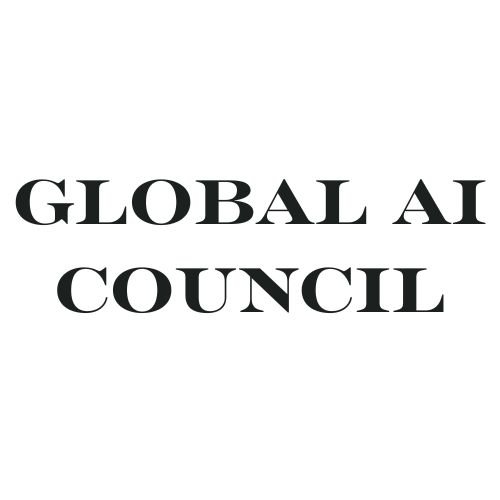Navigating Disruption: Jobs on the Brink in the Next 5 Years
Introduction: The Rapid Evolution of the Job Landscape
The world of work is undergoing a seismic shift, driven by technological advancements, automation, and the relentless march of innovation. As we peer into the future, the next five years promise both unprecedented opportunities and challenges. This in-depth exploration delves into the jobs that are poised for disruption, examining the factors at play, the industries most affected, and the implications for the workforce.
**1. The Rise of Automation: Impact on Manufacturing and Routine Tasks
Automation, powered by robotics and artificial intelligence, is reshaping industries traditionally reliant on manual labor. Manufacturing, in particular, faces a paradigm shift as robots take center stage in tasks ranging from assembly lines to intricate precision work. Routine and repetitive tasks across various sectors, from data entry to customer service, are also at risk. The era of routine automation is upon us, heralding efficiency but also raising questions about job displacement.
**2. Retail in Flux: From Cashiers to Stock Clerks
The retail sector is experiencing a significant transformation, with automation technologies streamlining operations. Cashiers, once a staple in every store, are gradually being replaced by self-checkout kiosks and mobile payment systems. Stock clerks and inventory management roles are also witnessing disruption as robotic systems and AI-driven algorithms take over routine stocking, tracking, and supply chain management tasks.
**3. Transportation and Delivery: The Impact of Autonomous Vehicles
The advent of autonomous vehicles is poised to reshape the transportation and logistics industry. Truck drivers, delivery drivers, and even taxi and ride-sharing services face the prospect of disruption as self-driving vehicles become more prevalent. The ripple effect extends to roles in vehicle maintenance and logistics coordination, prompting a reevaluation of skill sets needed in this evolving landscape.
**4. Data-Driven Disruption: Changing Dynamics in Data Analysis and Entry
The rise of advanced analytics and machine learning algorithms is streamlining data-related tasks but also disrupting roles that were traditionally labor-intensive. Data entry jobs, for instance, face the risk of automation as algorithms become more adept at processing and categorizing information. Data analysts, while still in demand, may find their roles evolving as AI tools handle routine analytical tasks, allowing analysts to focus on more complex and strategic aspects.
**5. Customer Service in the Digital Age: Chatbots and Virtual Assistants
Customer service roles are undergoing a digital transformation with the advent of chatbots and virtual assistants. Routine inquiries, issue resolution, and even initial engagement with customers are increasingly handled by AI-driven systems. While this shift enhances efficiency and provides round-the-clock service, it raises questions about the future of traditional customer service roles and the need for upskilling in areas such as AI interaction and emotional intelligence.
**6. The Evolution of Healthcare: Automation in Diagnosis and Admin
The healthcare sector, while traditionally resistant to automation, is experiencing changes in roles related to diagnosis and administration. AI algorithms are being developed to assist in medical diagnostics, automating aspects of image analysis and pattern recognition. Administrative roles in healthcare, such as billing and scheduling, are also being streamlined through automation, prompting a reevaluation of skill sets within the industry.
**7. Construction and Maintenance: The Role of Robotics
Construction sites and maintenance tasks are witnessing the integration of robotics for efficiency and safety. From bricklaying robots to drones inspecting infrastructure, these technologies are automating tasks that were traditionally labor-intensive. This shift poses challenges for roles in manual construction and routine maintenance, prompting the need for upskilling in robotics operation and maintenance.
**8. Financial Services: Fintech and the Changing Face of Banking
The financial services industry is experiencing disruption through the rise of fintech. Traditional banking roles, from tellers to some aspects of financial advisory, face challenges as digital platforms and automated financial services gain traction. The need for digital literacy and a shift toward roles that combine financial expertise with technology proficiency is evident in this evolving landscape.
**9. Creative Disruption: AI in Content Creation and Design
While traditionally considered immune to automation, creative industries are also witnessing disruption. AI algorithms are being employed to generate content, design graphics, and even compose music. While these technologies enhance efficiency, they prompt a reevaluation of the human touch in creative endeavors and the evolving role of artists, writers, and designers in a landscape augmented by AI.
**10. The Human Element: Jobs Resilient to Automation
Amidst the wave of automation and technological disruption, certain jobs remain resilient due to their inherently human qualities. Roles that require emotional intelligence, creativity, complex problem-solving, and critical thinking are less susceptible to automation. Industries such as healthcare (in roles requiring empathy and patient care), education (in roles involving mentorship and personalized instruction), and certain aspects of technology (in roles focused on innovation and strategic planning) showcase the enduring value of human skills.
Conclusion: Navigating the Future Workforce
As we stand on the precipice of a transformed job landscape, the key lies in adaptability and continuous learning. The jobs poised for disruption are not necessarily disappearing but evolving, demanding a
